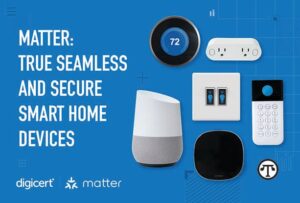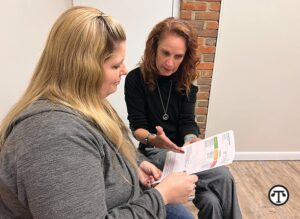 (NAPSI)—If you’re like many people, the idea of a “smart home” is both enticing and a bit intimidating. There’s the promise of an ideal in which simple voice commands and automation can set the lighting, activate the air conditioning, and play music on demand. In reality, setting up all the many devices to make this possible can be daunting due to one primary underlying reason: “Standards,” according to DigiCert VP of Digital Trust, Mike Nelson. “Or, rather, lack thereof.” According to Nelson, the answer is establishing a catch-all standard in device-making for all available vendors. Now, there’s Matter, which can be this long-awaited standard.
(NAPSI)—If you’re like many people, the idea of a “smart home” is both enticing and a bit intimidating. There’s the promise of an ideal in which simple voice commands and automation can set the lighting, activate the air conditioning, and play music on demand. In reality, setting up all the many devices to make this possible can be daunting due to one primary underlying reason: “Standards,” according to DigiCert VP of Digital Trust, Mike Nelson. “Or, rather, lack thereof.” According to Nelson, the answer is establishing a catch-all standard in device-making for all available vendors. Now, there’s Matter, which can be this long-awaited standard.
The Problem
Despite roughly a billion smart home devices shipped yearly, Nelson claims there is still a need for a device interaction protocol. Competing platforms, such as Google Nest, Apple Home, and Amazon Alexa, contend in a chaotic market. This is without including the countless other companies producing all manner of products that are compatible with all of these smart home systems. The varying degrees of interoperability are further complicated by the sheer number of control apps coming to market. Continue reading
 (NAPSI)—Ah, Spring: Flowers in bloom, birds on the wing, fun in the sun—and itchy eyes, runny noses, sneezing, coughing, hives, wheezing, fatigue and difficulty breathing for the more than 60 million Americans the Asthma and Allergy Foundation of America say suffer from asthma or allergies. But there can be a solution.
(NAPSI)—Ah, Spring: Flowers in bloom, birds on the wing, fun in the sun—and itchy eyes, runny noses, sneezing, coughing, hives, wheezing, fatigue and difficulty breathing for the more than 60 million Americans the Asthma and Allergy Foundation of America say suffer from asthma or allergies. But there can be a solution.
The Problem
Even the cleanest home can harbor all sorts of indoor allergens. Unseen contaminants and air pollutants including dirt, dust, pet dander, cigarette smoke, mold, mildew and chemicals. They get pulled into your home’s HVAC system and recirculated throughout the house several times a day.
An Answer
A few simple steps can reduce and remove allergens. Continue reading

Michele Long (right) reviews a GeneSight test report with her patient, Beth. Genetic information helps providers find effective mental health medications and may reduce the frustrating trial-and-error process that is common when treating mental illness.
(NAPSI)—Nurse practitioner Michele Long has been Beth’s primary care provider for years. So, when Beth started experiencing symptoms of depression, she scheduled an appointment with Michele.
It was the right decision. According to Beth, “Michele made me feel very comfortable talking to her about my mental health.”
Talking about mental health with primary care providers is something doctors and nurse practitioners want more people to do. According to the GeneSight Mental Health Monitor national survey from Myriad Genetics, more than 83 percent of primary care providers (PCPs) wish more of their patients would tell them about their mental health concerns.
Yet, more than half of surveyed clinicians don’t think patients are aware that PCPs and nurse practitioners are fully trained to diagnose and treat mental health conditions. Continue reading
